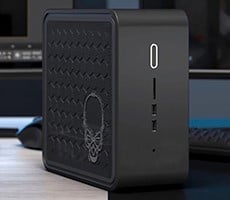Digital Storm's Core i5 System Reviewed
Instead of just relying on a CPU-centric program to task the processor, we opted to pound both video cards and the CPU simultaneously. For processor testing, we used DIEP. DIEP is a chess simulator developed by Vincent Diepeveen. The program scales excellently across multiple cores, and chess simulation itself is an inherently good stress test. The CPU is tasked with calculating every single possible move in a chess game—first in a single round, then two, then three, etc. This process hammers the L1/L2 cache, tests the efficacy of the processor's branch prediction unit, and indirectly measures ALU performance.
In order to simultaneously stress the video cards, we (ironically) fired up Furmark's stress test. It may not be a good predictor of GPU overclocking headroom, as we previously discussed, but it's fabulous at sucking down power and raising GPU temperatures. Under Furmark, the temperature of both GTX 275's rose steadily, peaking between 91-93C. We used CoreTemp 0.99.5 to record CPU temperatures; the numbers given here represent the average temperature across all four cores.
One side note: Simultaneously running DIEP and Furmark puts a substantial load on the PSU, often drawing 685-700W. The Cheiftech unit performed flawlessly in our tests, even under a sustained load of 12-16 hours.
Here's the configurations we tested:
- 1 Akasa DBL122512L (CPU-side), pushing air over the radiator.
- 1 Akasa DBL122512L (case-side), pulling air over the radiator.
- 2 Akasa DBL122512L (stock configuration) simultaneously pushing and pulling air over the radiator.
- 1 Akasa DBL122512L + 1 Thermaltake 1225, Thermaltake fan pushing.
- 1 Thermaltake 1225 pushing air over the radiator.

Allow for some variance in ambient air temperature and for the fact that these numbers are averaged, and the already-small gap between these values shrinks even more. That's bad news for the stock configuration, acoustically speaking. The variance between the single Thermaltake fan and dual Akasa fans indicates that the user "pays" for a 3.5 degree temperature reduction with a system that produces 4x the noise.
The Storm and the Fury:
As shipped, Digital Storm's review system has a significant acoustic flaw in our opinion. It's not just loud—it's pointlessly loud. The additional volume delivers virtually no thermal benefit and contributes nothing to system stability. Even if the company wanted to include three fans, there are much quieter options on the market that are demonstrably capable of getting the job done; the per-fan premium would not add much to the total system cost either.






